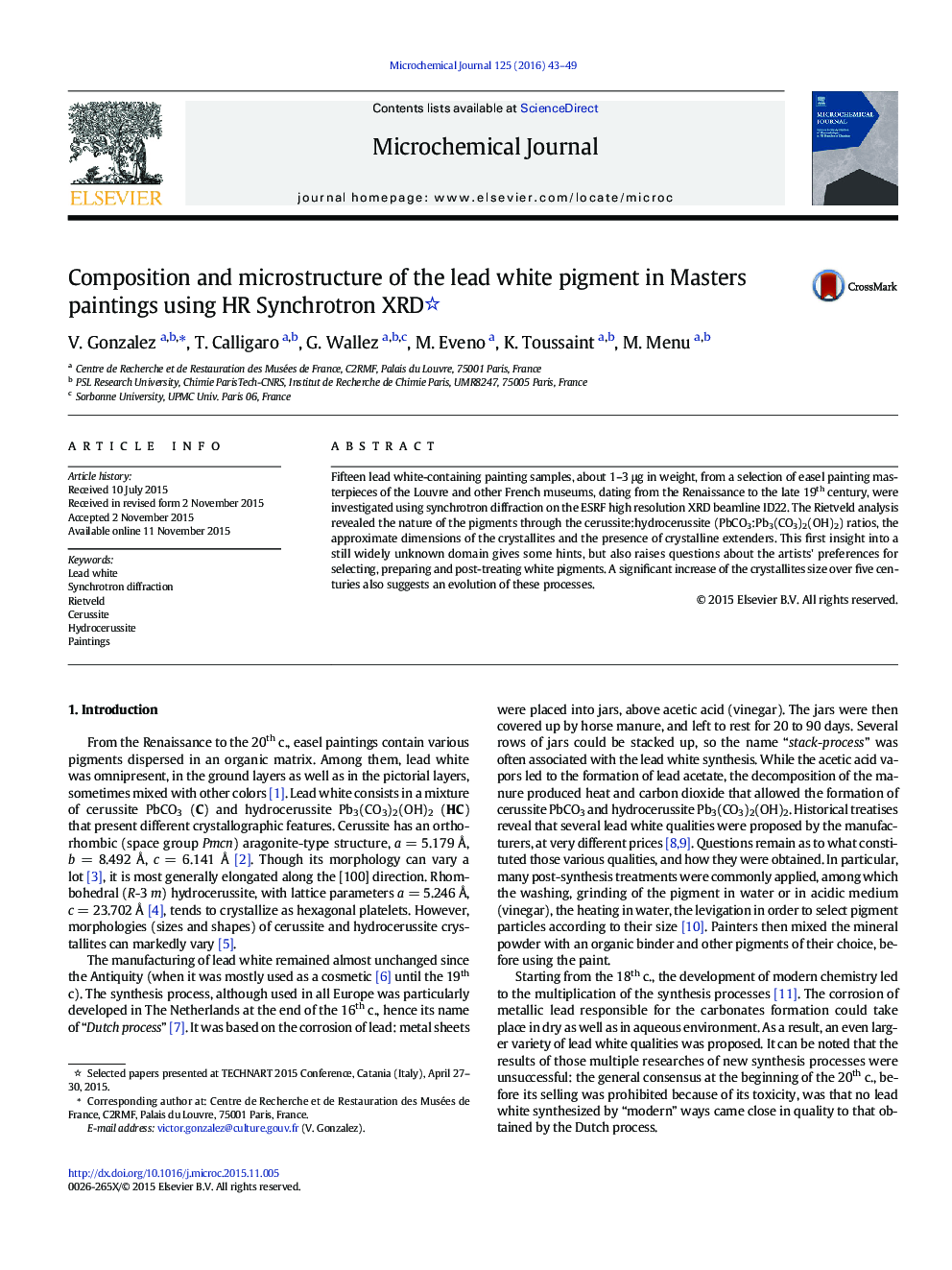| Article ID | Journal | Published Year | Pages | File Type |
|---|---|---|---|---|
| 7641517 | Microchemical Journal | 2016 | 7 Pages |
Abstract
Fifteen lead white-containing painting samples, about 1-3 μg in weight, from a selection of easel painting masterpieces of the Louvre and other French museums, dating from the Renaissance to the late 19th century, were investigated using synchrotron diffraction on the ESRF high resolution XRD beamline ID22. The Rietveld analysis revealed the nature of the pigments through the cerussite:hydrocerussite (PbCO3:Pb3(CO3)2(OH)2) ratios, the approximate dimensions of the crystallites and the presence of crystalline extenders. This first insight into a still widely unknown domain gives some hints, but also raises questions about the artists' preferences for selecting, preparing and post-treating white pigments. A significant increase of the crystallites size over five centuries also suggests an evolution of these processes.
Related Topics
Physical Sciences and Engineering
Chemistry
Analytical Chemistry
Authors
V. Gonzalez, T. Calligaro, G. Wallez, M. Eveno, K. Toussaint, M. Menu,
